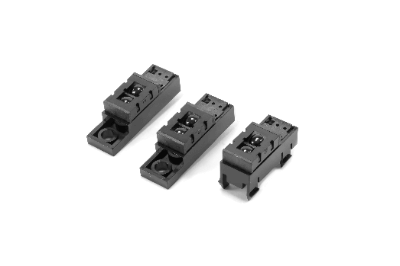What Is a Photomicrosensor?
 Photomicrosensors are small optical sensors with built-in amplifiers.
Photomicrosensors are small optical sensors with built-in amplifiers.
It can detect the presence or absence of an object and its position using light. Photomicrosensors are available in reflective and transmissive types, and are called “photointerrupters” and “photo-reflectors,” respectively. These sensors are mainly used in various familiar products for built-in devices.
Applications of Photomicrosensors
Photomicrosensors are classified into four types depending on the object to be detected.
1. Reflective Type
This type of sensor uses a reflection of light. They are used for detecting the presence of paper in a printer and for simple barcode reading.
2. Transmissive Type
This simple sensor detects objects by light passing through a slit, and is used to detect IC cards, train tickets, etc.
3. Separate Type
This type of sensor allows the distance between the light-emitting and light-receiving parts to be adjusted by moving the light-emitting part. This type of sensor is used to detect the passage of an object when a person buys a product from a vending machine or wins a prize in a game machine.
4. Actuator Type
This is a sensor that combines levers called actuators. It is used in ticket vending machines and vending machines to detect the passage of banknotes.
Principle of Photomicrosensors
The principle of photomicrosensors varies depending on the type. It is important to select the most suitable one of these sensors depending on the object to be detected and the location where it is used.
1. Reflective Type
The reflective type has a structure in which the light-emitting element and the light-receiving element are installed in parallel. Light emitted from the light emitter hits an object, is reflected, and is received by the light receiver.
The object is detected by this reflected light. Although it is easy to install, the disadvantage is that the objects to be detected and the distance to be detected are limited.
2. Transmissive Type
Transmissive sensors have a structure in which the light emitting element and the light receiving element are installed facing each other. Light emitted from the light emitting element is directly received by the light receiving element. If there is no object, the light is received as it is, but if there is an object, the light does not reach it.
It is simple and does not require alignment of the optical axis, but its disadvantage is that the size of the object to be examined is limited.
3. Detached Type
Separated type has a structure in which the light emitting and light receiving parts face each other in a separated state. Since the light emitting and light receiving elements are separated, the position can be freely determined, but the disadvantage is that the optical axes must be aligned.
4. Actuator Type
The actuator type has a structure that combines a see-through sensor and a lever that rotates. By using a lever to block light, even objects that allow light to penetrate can be detected. However, the disadvantage is that the parts around the lever have a limited life span, limiting the period of use.
Other Information on Photomicrosensors
Photomicrosensor Circuit Design
Important characteristics to consider when designing are the photocurrent and resistance, which indicate how much output is available from the amount of forward current. The key point when designing is to consider and select the optimum level of forward current before designing the limiting resistance value. Also, if a reverse voltage is applied, design a diode in reverse parallel with the LED.
By designing the worst-case value, it is possible to ensure normal operation even when the characteristics are biased toward the worse side in terms of function. While considering the above points, it is necessary to supply an appropriate level of current externally. Designing while considering how much forward current is required for the photosensitive side to operate will ensure normal operation.
In the design of phototransistor output type, the temperature dependence of dark current and photocurrent must be taken into consideration. When detecting an object with high transmittance or an object smaller than the shape and dimensions of the surface to emit and receive light, the photocurrent with and without the object must be measured and their ratio must be calculated.